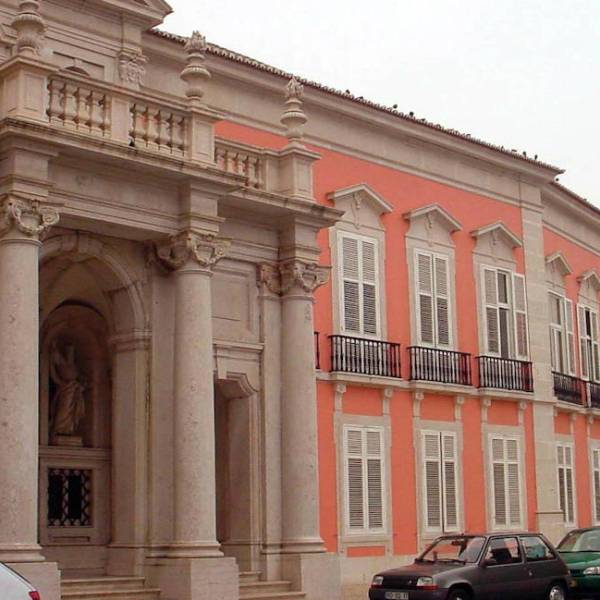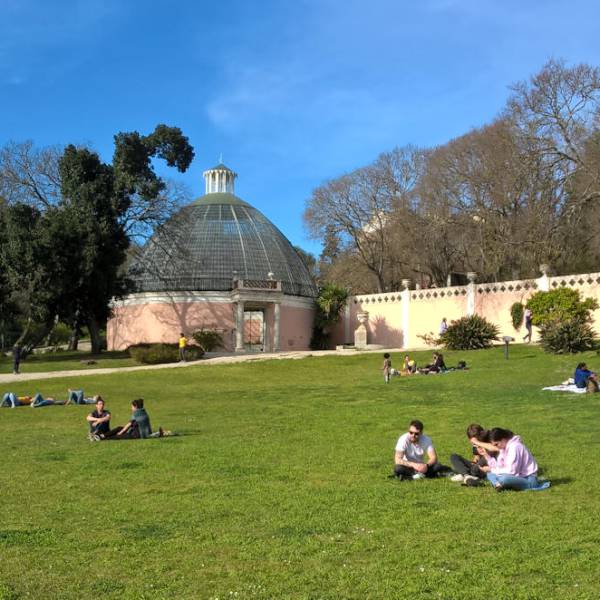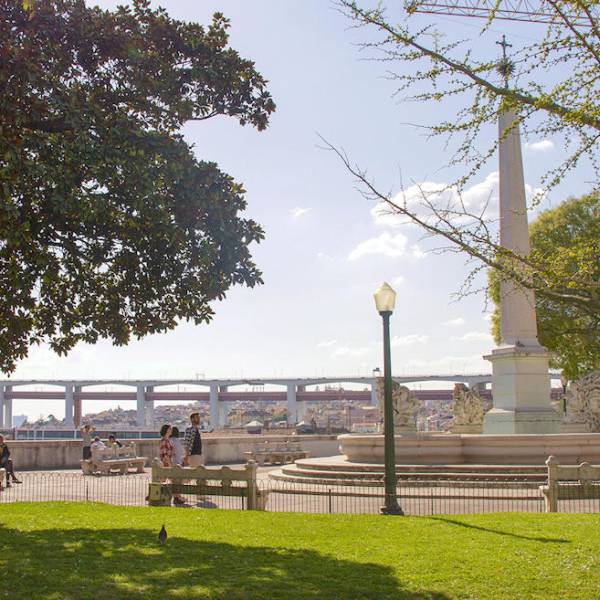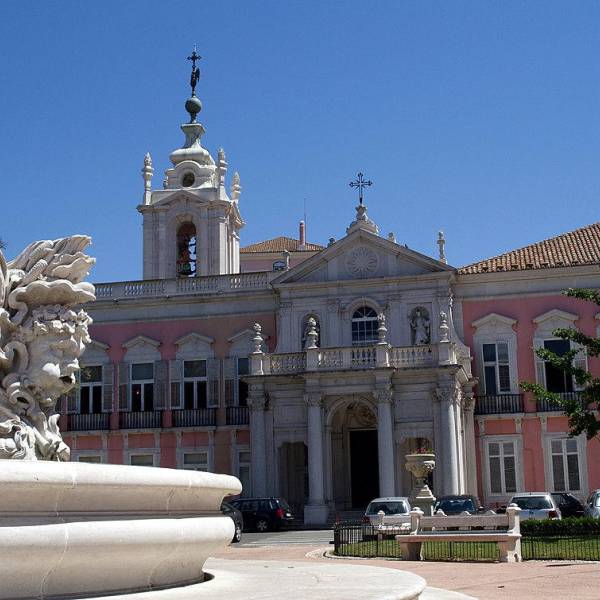Over time, the chapel became a point of passage for sailors and navigators who sought protection and good health. The image of Nossa Senhora da Saúde gained fame, and its name became associated with other miracles, spreading rapidly among the population, especially among sailors of the India Route. The fame of the chapel and the image reached the royal family, and King Peter (Pedro) II of Portugal, who was seriously ill in 1705, requested that the image of Nossa Senhora das Necessidades be brought to him. Once he recovered, the king returned the image to its original chapel and promised to protect it.
King John (João) V of Portugal continued his father's devotion and, as a sign of gratitude to the image, took possession of the chapel and its adjacent properties, turning them into the "possession of His Majesty, for his royal service, of the said Quinta and its Hermitage of Nossa Senhora das Necessidades and all its belongings and ornaments". João V expanded the chapel and built a palace on the same site. He also ordered the construction of a convent, called a hospice, for clergy dedicated to teaching theology, humanities, and sciences. This expansion led to the acquisition of small adjacent properties and the enlargement of the palace gardens. After the completion of the convent, it was occupied by the Oratory of Lisbon Congregation.
In 1747, by royal decree, King João V donated the hospice, the surrounding area, and all the adjacent lands to the Oratory of Lisbon Congregation, with the exception of the fortification necessary for the protection of the city, the royal palace, the sacristy, and the choir of the chapel, which the king reserved for personal use and that of his descendants. In return, the Oratory of Lisbon committed to teaching the following subjects: Christian Doctrine, Grammar, Rhetoric, Moral Theology, and Philosophy.
The authorship of the construction is traditionally attributed to several architects, but it is difficult to determine exactly who was involved. However, it is conclusive that King João V was committed to the rapid construction of the buildings. The friars moved into the hospice on May 6, 1751, and started teaching on July 27 of the same year, with the participation of King Joseph (José) I of Portugal at the opening of the classes.
The convent gained a reputation as an excellent institution for the teaching of humanities and sciences and attracted the elite of the capital, providing the formation of an intellectual elite. Physics experiments often attracted members of the court, and King José even witnessed some physics experiments conducted by Father Master Theodoro de Almeida in the Instruments Room. The royal attention given to the Oratory Order and its protection reflected the desire to counterbalance the increasing influence of the Society of Jesus in Portugal.
After the earthquake of 1755, which devastated much of Lisbon, the Necessidades Palace underwent repairs and renovations. In the following years, various kings and queens made additions and improvements to the palace, adding their personal touches to the architecture and interior design.
One notable addition was made by Queen Maria I of Portugal, who commissioned the construction of a neoclassical chapel within the palace grounds. This chapel, known as the Chapel of Nossa Senhora da Ajuda, features beautiful frescoes and intricate woodwork, reflecting the artistic style of the time.
Lisbon.vip Recommends
During the tumultuous years of the 20th century, Necessidades Palace played a significant role in Portuguese history. In 1910, the palace became the headquarters of the Ministry of Foreign Affairs, a role it still serves to this day. The palace witnessed key political events, including the proclamation of the Portuguese Republic and the signing of international treaties.
In addition to its historical and political significance, Necessidades Palace is renowned for its beautiful gardens. The palace gardens, known as the Park of Necessidades (Tapada das Necessidades), offer a tranquil retreat with lush greenery, ornate fountains, and charming pathways. Visitors can stroll through the gardens, enjoying the serene atmosphere and admiring the panoramic views of the city and the The Tagus River (Rio Tejo).
Today, Necessidades Palace continues to be an important landmark in Lisbon, representing the rich cultural heritage and architectural grandeur of Portugal. It is occasionally open to the public for guided tours and special events, allowing visitors to explore its opulent rooms, learn about its history, and appreciate its artistic treasures.
Whether it's for its historical significance, architectural splendor, or picturesque gardens, Necessidades Palace stands as a testament to Portugal's rich past and its enduring beauty.
Map View







